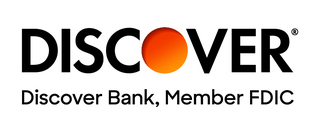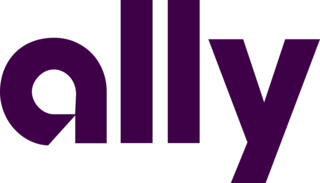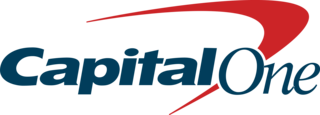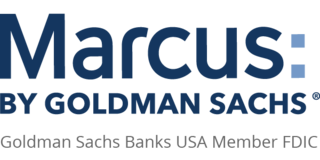10 Best Savings Accounts of 2024
Money's Main Takeaways
We found a wealth of high rates from traditional savings accounts. Many financial institutions offer interest rates between 4.50% and 5.26% — around 10 times more than the national average of 0.46%, as reported by the Federal Deposit Insurance Corporation (FDIC) on April 15, 2024.
- Bread has no monthly fees and no minimum deposit, and offers one of the highest APYs on our list at 4.75%
- CIT Bank offers a strong APY of 4.70% for balances of $5K and up
- Discover Bank stands out for offering 24/7 customer service by phone
- Capital One's Teen Checking Account allows guardians to link to their own Capital One account for monitoring
Why Trust Us?
Our editors and writers review savings products of all kinds, including traditional savings accounts and high-yield savings accounts. Read our full methodology to learn more.
- We analyze 50+ banks, credit unions, online banks and fintech companies.
- We use 12 evaluation points, including APY, account fees, customer satisfaction, privacy and security, in our savings account reviews.
- Thousands of hours of cumulative research is involved.
- All financial institutions on our list are FDIC- or NCUA-insured.
*All information provided here is accurate as of April 19, 2024. We update rates on a weekly basis. However, APYs and other account information is subject to change.
The best savings accounts offer high annual percentage yields (APYs), have low minimum balance requirements and charge few to no fees. Financial institutions should also offer reliable and widely accessible customer service.
The products on our list offer annual percentage yields of up to 5.26%. Read on to see our picks for the best savings accounts for 2024.
Our Top Picks for the 10 Best Savings Accounts of 2024
The companies listed below are organized alphabetically.
- Ally - Best Digital Savings Tools (4.25% APY)
- Barclays - Best Savings Account to Pair with a Certificate of Deposit (CD) (4.35% APY)
- Bread - Best No-Frills Savings Account (4.75% APY)
- Capital One - Best Savings Account for Kids and Teens (2.50% APY)
- CIT Bank - Best Savings Account for $5,000 and Up (4.70% APY)
- Discover Bank - Best for Customer Service (4.00% APY)
- Marcus by Goldman Sachs - Best Savings Account to Pair with an Investment Portfolio (4.40% APY)
- Raisin - Best Savings Account Marketplace (5.26% APY)
- SoFi - Best Savings and Checking Account Combination (Up to 4.20% APY)
- Synchrony Bank - Best Savings Account with an ATM Card (4.75% APY)
Best Savings Account Reviews
- Savings "buckets" make it easy to visualize and keep track of savings goals
- No minimum deposit required
- 24/7 customer support
- Mobile check deposit available
- No fees for overdrafts, incoming wires or cashier’s checks
- No ATM access for online savings account (you can still use ATMs without a fee)
- No brick and mortar locations
- Withdrawals are limited to 10 per statement cycle
- APY
- 4.20%
- Minimum opening deposit
- None
- Other fees
- Returned deposit item $7.50 / Excessive transactions fee $10 per transaction / Expedited delivery $15 / Outgoing domestic wires $20
Why we chose it: Ally Bank offers innovative savings tools, such as “buckets” and “boosters,” which are integrated into its mobile app.
Ally Bank’s online savings account not only offers a competitive APY, but also stands out with its smart saving tools. The digital buckets, known as saving buckets, allow savers to divide their savings into up to 10 different categories.
Additionally, Ally Bank offers automated savings tools called boosters that feature:
- Recurring transfers: Schedule recurring transfers from your checking account.
- Round ups: Ally automatically rounds up eligible transactions to the nearest dollar, then automatically transfers these amounts to your savings in increments of $5 or more.
- Surprise savings: Ally analyzes your checking account monthly for funds considered "safe to save" and automatically transfers those funds to your savings account.
Note that you can opt in or out of these automated boosters at any time.
Read our full review of Ally Bank savings accounts here.
- No monthly fees on savings or CD accounts
- Competitive APYs on CDs with a variety of term lengths
- No minimum deposit requirement for savings or CDs
- No ATM access
- Savings account APY is slightly lower than other companies on our list
- APY
- 4.50%
- Minimum opening deposit
- None
- Other fees
- No monthly maintenance fees / No limit to the number of withdrawals and transfers
Why we chose it: Barclays offers competitive rates for its savings account and certificates of deposit (CDs). Additionally, there are no fees or minimum deposit requirements for either product.
Barclays Online Savings offers a strong APY, and the online bank offers an even higher APY on its CDs. Its CDs come with terms of either 6, 12, 18, 24, 36, 48 or 60 months. If you’re looking to incorporate a CD alongside your savings account, Barclays is a solid choice.
There are no monthly fees or minimum balance requirements with either Barclays Online Savings or its CDs. You can fund your savings account using mobile check deposit or online transfer from an external bank account. However, CDs can only be funded via online transfer.
Read our full review of Barclays Online Savings accounts here.
- No monthly maintenance fee
- Mobile check deposit
- Unlimited transfers to external accounts
- Required $100 opening deposit may be too high for some customers
- No ATM card available
- APY
- 4.75%
- Minimum opening deposit
- $100
- Other fees
- $25 per outgoing wire transfer / $15 per official check request / $5 per paper statement request
Why we chose it: Bread Savings has one of the highest APYs on our list. The online bank charges no fees, has a mobile check deposit option and allows unlimited transfers.
Bread Financial offers a high-yield savings account with a strong APY, which requires a minimum opening deposit of $100. You can fund your account through electronic transfers or mobile check deposits in the Bread Financial app.
After funding, Bread Savings has no ongoing minimum balance requirement or monthly fees. The bank also doesn’t charge overdraft fees, and there are no restrictions on the number of transfers to external bank accounts.
- No minimum required deposit
- No account maintenance fees
- No excess withdrawal fees
- No ATM card
- APY is lower than other companies we evaluated
- APY
- 2.50%
- Minimum opening deposit
- None
- Other fees
- No monthly or maintenance fees
Why we chose it: Capital One offers a custodial savings account with no monthly fees, no minimum deposit and a competitive APY. Parents and guardians can link this account to their own to help manage finances.
While best known for its credit cards, Capital One offers multiple savings products, including its Kids Savings Account. Parents and guardians of children eight years and older can open this free account, which also has no minimum balance requirement, to help their children learn personal finance basics without the risk of extra charges.
The savings account can be paired with a fee-free Teen Checking Account, which comes with a debit card guardians can lock or unlock at any time. Parents and guardians can set up automated deposits from this account as well as transfers from their own accounts, and oversee all of their Capital One accounts via mobile app.
While the APY on the Kids Savings Account is lower than what’s offered by other financial institutions on our list, it remains a helpful tool for youth to learn how to manage money while under adult supervision.
- High APY for accounts funded with $5,000 or more
- No balance cap on highest available APY
- No limit on transfers to external bank accounts
- No overdraft fees
- Mobile check deposit via CIT Bank app
- No ATM card for withdrawals
- Must maintain balance of $5,000 or more to earn highest APY
- APY
- 4.70% (Platinum Savings)
- Minimum opening deposit
- $5,000
- Other fees
- $10 return deposit item fee / $10 outgoing wire transfer fee for accounts with less than $25,000
Why we chose it: CIT Bank offers a competitive APY on balances of $5,000 and up.
CIT Bank charges no monthly fees and has no limits on how many transfers you can make out of your Platinum Savings account. A $5,000 deposit is required to open the account. Note that while there is no ongoing minimum balance requirement, only balances of $5,000 and up earn the highest available APY.
CIT Bank also offers the Savings Connect account, which has a slightly lower APY but requires only $100 to open. Like Platinum Savings, this account also features no monthly fees and no overdraft charges.
Read our full review of CIT Bank savings accounts here.
- Customer service reps available by phone 24/7
- Ranks number one in J.D. Power’s 2023 Direct Banking Satisfaction Study
- No maintenance fees or minimum balance requirements
- No ATM card
- Withdrawals limited to six per cycle
- APY
- 4.00%
- Minimum opening deposit
- None
- Other fees
- $30 per outgoing wire transfer
Why we chose it: Discover consistently ranks high in customer satisfaction and offers 24/7 customer service by phone.
Discover Bank, which earned the top spot for overall satisfaction in J.D. Power’s 2023 Direct Banking Satisfaction Study, offers 24/7 customer service. Unlike many other banks we evaluated, Discover Bank representatives are available to assist customers any time of day, any day of the week — even on holidays.
In terms of withdrawals, online transfers are limited to six per cycle. Discover may refuse to pay transfers in excess of this amount. Discover could also close your account if you exceed the limit on a regular basis. Note, however, that there is no limit on how many withdrawals you can make by phone. (An official bank check will be mailed to you.)
There are no monthly fees with a Discover Bank savings account. Additionally, Discover does not charge for overdrafts.
Read our full review of Discover savings accounts here.
- Same-day transfers of up to $100,000 (inbound and outbound)
- No monthly fees or minimum deposit requirement
- Combine with Marcus Invest for more returns on your money
- No ATM access for savings account
- No mobile check deposits
- APY
- 4.40%
- Minimum opening deposit
- None
- Other fees
- None
Why we chose it: Marcus by Goldman Sachs is our choice for the best savings account to pair with an investment portfolio because of its competitive APY and guided investment help.
Marcus by Goldman Sachs offers a solid savings account: no fees, competitive APY and no minimum opening deposit requirement.
Additionally, if you’re looking to invest, Marcus Invest is a strong option for beginners; at sign-up, you answer simple questions to shape a portfolio that’s best for your needs. The opening requirement is only $5 for either an individual investment account, joint investment account or individual retirement account (IRA).
Read our full review of Marcus by Goldman Sachs savings accounts here.
- Compare savings accounts from over 50 different credit unions and banks
- No monthly fees on any accounts offered so long as you satisfy account requirements
- You can add additional savings products to your Raisin account to get the most out of your funds
- Must register with Raisin for access to all savings products
- Account requirements (e.g., minimum opening deposit) and features vary widely across financial institutions
- APY
- 5.26%
- Minimum opening deposit
- $1
- Other fees
- Varies by bank
Why we chose it: Raisin partners with over 50 financial institutions to offer a variety of savings products with competitive APYs.
Raisin is an online marketplace where you can comparison shop high-yield savings accounts from more than 60 member FDIC or NCUA national banks, online-only banks and credit unions, including Liberty Savings Bank, Quontic Bank, Sallie Mae and Western Alliance Bank.
You can search for accounts based on specific characteristics (e.g. credit union, minority-led, charitable companies, digital first) as well as APY and the amount you plan to deposit.
Furthermore, once you’ve signed up, you can add additional accounts from other partner banks and manage them all at once through your Raisin account.
- Signup bonus of up to $300
- Multiple savings tools, including Vaults for individual savings goals
- Get paid up to two days early with direct deposit to checking account
- Checking account also earns interest
- Must set up direct deposit to SoFi checking account to qualify for highest APY and signup bonus
- APY
- Up to 4.20% APY with direct deposit or $5,000 or more in qualifying deposits during the 30-day evaluation period
- Minimum opening deposit
- None
- Other fees
- None
Why we chose it: SoFi offers a strong savings APY and cash-back opportunities from debit card purchases, plus a signup bonus of up to $300.
SoFi is an ideal choice for people looking to host their savings and checking accounts within the same bank. Its savings account offers a competitive APY, as well as several savings tools, such as automated round-ups. (SoFi automatically rounds up your debit card purchases to the nearest dollar and deposits the change into your savings account.)
Furthermore, new SoFi customers can receive up to $300 as a signup bonus. To get the full amount, you must receive direct deposits totaling at least $5,000 during the qualifying period, which starts the day you receive your first direct deposit and ends 25 days later. Direct deposits of at least $1,000 but less than $5,000 qualify for a $50 bonus.
- Includes debit card for ATM withdrawals and purchases
- No monthly limit on number of ATM transactions
- No minimum deposit requirement or monthly fees
- Virtual savings goal calculator
- Only $5 in ATM fee reimbursements per statement cycle
- $1,000 daily ATM withdrawal limit
- $500 daily point-of-sale transaction limit
- Limit of six transfers to external accounts per month
- APY
- 4.75%
- Minimum opening deposit
- None
- Other fees
- Surcharges from out-of-network ATMs (refunded up to $5 per month)
Why we chose it: Synchrony Bank is one of the few banks that includes an ATM card with its online savings account.
You can use your Synchrony ATM withdrawals for free at in-network ATMs (Plus or Accel) or for a fee at out-of-network ATMs. You may also be able to use your ATM card fee-free at businesses that accept pin-based ATM cards.
Note that Synchrony only reimburses up to $5 in ATM fees per statement cycle. Additionally, there is a limit of $1,000 in ATM withdrawals per day.
Read our full review of Synchrony online savings accounts here.
Savings Accounts Guide
A savings account with a good rate of return is an excellent way to make your money grow — whether you’re building an emergency fund, saving for that dream vacation or making sure you have a good financial cushion for the future.
However, there are more savings products than just a traditional savings account, and these can be useful for different goals. Read on to learn more about savings accounts and how they compare to the other types of account options.
- What is a savings account?
- Why have a savings account?
- How to choose a savings account
- How to open a savings account
- How does APY work?
- Other types of savings products
- Savings account vs. money market account vs. certificate of deposit (CD)
- Savings account glossary
What is a savings account?
A savings account is a deposit account that generates interest on your funds that you deposit. Unlike interest-bearing checking accounts, the interest rates on savings accounts are typically much higher.
Savings accounts are often used for short-term and medium-term savings goals. This is because they have higher interest rates than checking accounts, but lower rates than other financial products, such as certificates of deposit (CDs).
Traditional savings account vs. high-yield savings account
Traditional savings accounts and high-yield savings accounts are very similar in their general purpose and features, but they do have some notable differences: A high-yield savings account is a savings account that offers higher annual percentage yields (APYs) than other types of savings accounts.
While APYs fluctuate depending on the federal funds rate set by the Federal Reserve, HYSA interest rates are consistently the highest on the market.
Traditional savings account
High-yield savings account
APY is often closer to the national average rate as reported by the FDIC
APY is often considerably higher than the national average savings account rate (sometimes 8 to 20 times higher)
May be offered by a brick-and-mortar bank, but also online banks
Almost always an online-only product
May allow you to withdraw funds from an ATM
Rarely allows for ATM withdrawals, instead relies on electronic transfers
May be limited to six withdrawals per month
May be limited to six withdrawals per month
Why have a savings account?
Savings accounts are a great way of setting money aside that will grow thanks to interest. You could use savings for an emergency fund or for larger savings goals, such as a down payment on a car or home loan.
- Can be opened in just a few minutes online
- Higher interest rate than a checking account
- Limited access to funds helps to build savings
- May offer lower annual percentage yields than certificates of deposit and high-yield savings
- For accounts that offer ATM access, you may be tempted to withdraw often, which will limit your savings growth
- Interest earnings are considered taxable income
How to choose a savings account
The most important factor when choosing a savings account should be a high APY. This ensures that your savings get a small monthly boost.
However, the best savings accounts also include features such as:
- No monthly fees
- No minimum balance requirements
- No overdraft fees
- Easy account management, including online transfers in and out of your account
- Mobile banking app with mobile check deposit
- No limit on how many withdrawals you can make per cycle
- Access to funds via ATM withdrawal with no ATM fees (or unlimited reimbursements)
- 24/7 customer service
How to open a savings account
Once you’ve decided on the savings account that’s best for your savings goals, follow the steps below to open and manage your savings account.
- Complete the online application or apply in person at a physical branch location
- Read and accept the terms and conditions of your savings account
- Follow instructions to set up online banking
- Fund your account via transfer from an external bank account, mobile check deposit or, if your bank has physical locations, deposit cash in person
- Download the bank’s mobile app for easy account management
What do you need to open a savings account?
To open a savings account — or any type of bank account — you’ll generally need most or all of the following:
- A valid government-issued ID, e.g. driver’s license or passport
- Your Social Security number or individual taxpayer identification number
- Other personal information, such as date of birth, address and phone number
- An initial deposit to fund your new account
How does APY work?
Annual percentage yield (APY) works by compounding interest. The APY rate shows the total amount of interest you will earn, with both the principal (the funds you deposit) and interest earned on your funds included.
For example: You deposit $1,000 into a savings account with a 5.02% interest rate and 5.15% APY. The interest rate is the amount you earn on the principal ($1,000). However, the APY is a reflection of compound interest, which includes the principal amount plus the interest earned.
We’ll use daily compounding interest in this scenario, because that’s what most savings accounts offer (rather than monthly compounding interest). With an APY of 5.15%, in 12 months — assuming you don’t withdraw or add any funds — you earn a total of $51.48 in interest. At this point, your savings account balance will be $1,051.48.
It’s important to note that APYs are variable and can go up or down depending on market conditions. Keep an eye out for changes to ensure you’re getting the best possible return on your funds.
Other types of savings products
Most financial institutions offer multiple savings products with various features and benefits. Below you’ll find descriptions for several common products. For more details, read our explainer on types of savings accounts.
Money market accounts
Money market accounts (MMAs) offer interest rates on par with the best high-yield savings accounts, and often allow for the use of debit cards and checks. (Most HYSAs do not offer debit cards or check-writing privileges.) However, many MMAs have a minimum balance requirement that triggers a monthly fee if not met.
Like other savings accounts, withdrawals may be limited to six per month, not counting ATM transactions. Much like high-yield savings accounts, the interest rate on MMAs is variable and may change without notice.
To learn more about MMAs, read our list of the best money market accounts.
Certificates of deposit (CDs)
Certificates of deposit (CDs) are a type of deposit account through which you save money for a set period of time (term length) at a high, fixed (not variable) interest rate. During the term, which can be as short as three months or as long as several years (usually no more than 10), you should not withdraw your funds.
If you withdraw your funds before the term ends, you’ll be charged a penalty fee. These penalties depend on the CD’s term and typically entail the forfeiture of 60, 90 or 120 days of interest. However, it should be noted that some banks and credit unions offer no-penalty CDs.
To learn more about CDs, check out our list of the best CD rates.
Traditional savings account
A traditional savings account earns interest on the funds in your account. The APY can vary greatly across financial institutions. Some offer very low APYs (e.g., 0.50%) while others may offer closer to 5.00% APY.
Withdrawals from your savings account may be limited to six per month. However, the best banks provide an ATM card which allows for cash withdrawals at ATMs, and these specific transactions are often unlimited.
Specialty savings accounts
There are several other savings accounts that can be set up for specific savings goals. For example, some can be used as a savings fund for a dependent while others can be set up specifically to save for healthcare expenses.
Specialty savings account include:
- Children’s savings
- Health savings account (HSA)
- College funds (529 plans)
- Individual retirement accounts (traditional and Roth IRAs)
- Custodial accounts
- Thrift Savings Plan (select federal government employees, members of the armed forces)
Many of these accounts have tax benefits which allow you to save even more money in the long run. For example, a Roth IRA allows you to withdraw your savings tax-free, provided you meet the requirements, while an HSA lets you contribute money on a pre-tax basis for healthcare expenses.
Note that in the case of the HSA, you can only have this type of account if you have what is known as a high-deductible health plan.
Savings account vs. money market account vs. certificate of deposit (CD)
Although all three of these accounts are designed with savings in mind, there are some very notable differences between a savings account, a money market account and a certificate of deposit:
Traditional savings accounts
Money market accounts
Certificates of deposit
Low initial deposits ($0-$50)
Slightly larger initial deposits ($25-$100)
Largest initial deposits (can be as high as $1,500)
May not require a minimum balance
Minimum deposit may be required (e.g., $100, 500 or $1,000)
No minimum balance or deposit required
Variable interest rates that can go up or down over time
Variable interest rates may be tiered according to account balance
Fixed interest rates over set period of time (with some exceptions)
Low to high interest rates depending on financial institution
Typically high interest rates
High interest rates that increase with term length
Savings Account Glossary
Below you’ll find some of the most commonly used terms related to savings accounts.
Term
Definition
Annual percentage yield (APY)
APY is how much you’ll earn from account funds after one year. This rate includes the effects of compound interest, i.e. earning “interest on your interest.”
Interest
Interest is what the bank pays you. Some banks calculate interest on your daily balance, while others calculate it based on your balance at the end of a month. Most bank accounts pay out interest at the start of a new month or statement cycle.
Interest rate
This is the amount that the bank pays on your principal balance, typically expressed as a percentage.
Compound interest
Compound interest is the interest you earn on the principal amount plus the amount you’ve earned from interest. For example, if you deposit $1,000 and make $10 in interest in a month, the next time interest is applied, it will be to the total amount of $1,010, which includes the interest accumulated over the previous month.
Maintenance fee or monthly fee
Some banks charge their customers an account maintenance or service fee. The ones that do may offer different ways to have them waived, such as a minimum amount of direct deposits each month.
Savings Accounts FAQs
What account fees should you avoid with savings accounts?
How does a savings account work?
How much interest does a savings account earn?
How to open a savings account for a child
How We Chose the Best Savings Accounts
Our methodology for selecting the best savings account is based on several key points, including:
- Access to funds: We considered access to funds in analyzing savings accounts to provide detailed information about how (and how often) customers can make withdrawals.
- Account fees: We searched for savings accounts with zero monthly fees.
- Annual percentage yield (APY): We reviewed accounts for consistently strong APYs.
- Customer service: Financial institutions must have strong reputations for excellent customer service. We analyzed customer feedback across multiple third-party review sites, as well as J.D. Power’s 2023 Direct Banking Satisfaction Survey.
- Financial standing: Your financial institution should have a good financial rating from a reputable credit rating agency. We analyzed reports from S&P Global Ratings, Moody’s and Fitch Group.
- Fraud protection: We looked for financial institutions that provide help with identifying fraud, including tips for spotting identity theft and financial scams. We also analyzed fraud protection policies for guarantees that customers will not be held liable for unauthorized transactions.
- Minimum deposit requirement: We considered accounts with minimum deposit requirements and included these only when merited through benefits to account holders.
- Member FDIC or NCUA: We require that all financial institutions on our list are insured by the Federal Deposit Insurance Corporation (FDIC) or the National Credit Union Administration (NCUA), which guarantees deposits up to $250,000 per depositor, per ownership category, per FDIC-insured institution.
- Mobile app: We assessed the ease of use as well as ratings of the mobile apps of each financial institution.
- Privacy: Financial companies often share your personal information so that you can use their products effectively. Details about information sharing should be clearly stated in a financial institution’s privacy policy. However, customers should be given the choice to opt out of sharing their personal information with third parties, as per federal law.
- Security: We analyzed banking site and mobile app security measures, such as end-to-end data encryption, multi-factor authentication and biometric login options.
- Transparency: Financial institutions should be upfront about fees, interest rates and other terms and conditions.
Comparison to other banks and financial institutions
To best evaluate the quality of a savings account, we researched and compared accounts across a multitude of banks and financial institutions, including Alliant Credit Union, American Express National Bank, Apple Savings account, Axos Bank, Bank of America, Bask Bank, Blue Federal Credit Union, BluPeak Credit Union, BMO Alto, Bread Savings, Chase Savings, CIBC U.S., CIT Bank Savings Builder, Citi Bank, Citizens Bank, Emigrant Bank, Everbank (formerly TIAA Bank), First Citizens Bank, First Foundation Bank, First Internet Bank, FNBO, Ivy Bank, Jovia Financial Credit Union, Laurel Road, LendingClub, My Banking Direct, My Savings Direct, Nationwide, Newtek Bank, North American Savings Bank, PayPal Savings, Pentagon Federal Credit Union (PenFed), Popular Direct, Primis, RBMAX by Republic Bank, Quontic Bank, Regions Bank, Sallie Mae Bank, Salem Five, TAB Bank, TotalDirect Bank, UFB Direct, U.S. Bank, USAA Bank, Valley Direct Savings, Varo Bank, Vio Bank, Wealthfront, Wells Fargo and Western State Bank.
Our Top Picks for the 10 Best Savings Accounts of 2024
The companies listed below are organized alphabetically.
- Ally - Best Digital Savings Tools (4.25% APY)
- Barclays - Best Savings Account to Pair with a Certificate of Deposit (CD) (4.35% APY)
- Bread - Best No-Frills Savings Account (4.75% APY)
- Capital One - Best Savings Account for Kids and Teens (2.50% APY)
- CIT Bank - Best Savings Account for $5,000 and Up (5.00% APY)
- Discover Bank - Best for Customer Service (4.00% APY)
- Marcus by Goldman Sachs - Best Savings Account to Pair with an Investment Portfolio (4.40% APY)
- Raisin - Best Savings Account Marketplace (5.26% APY)
- SoFi - Best Savings and Checking Account Combination (Up to 4.20% APY)
- Synchrony Bank - Best Savings Account with an ATM Card (4.75% APY)
















